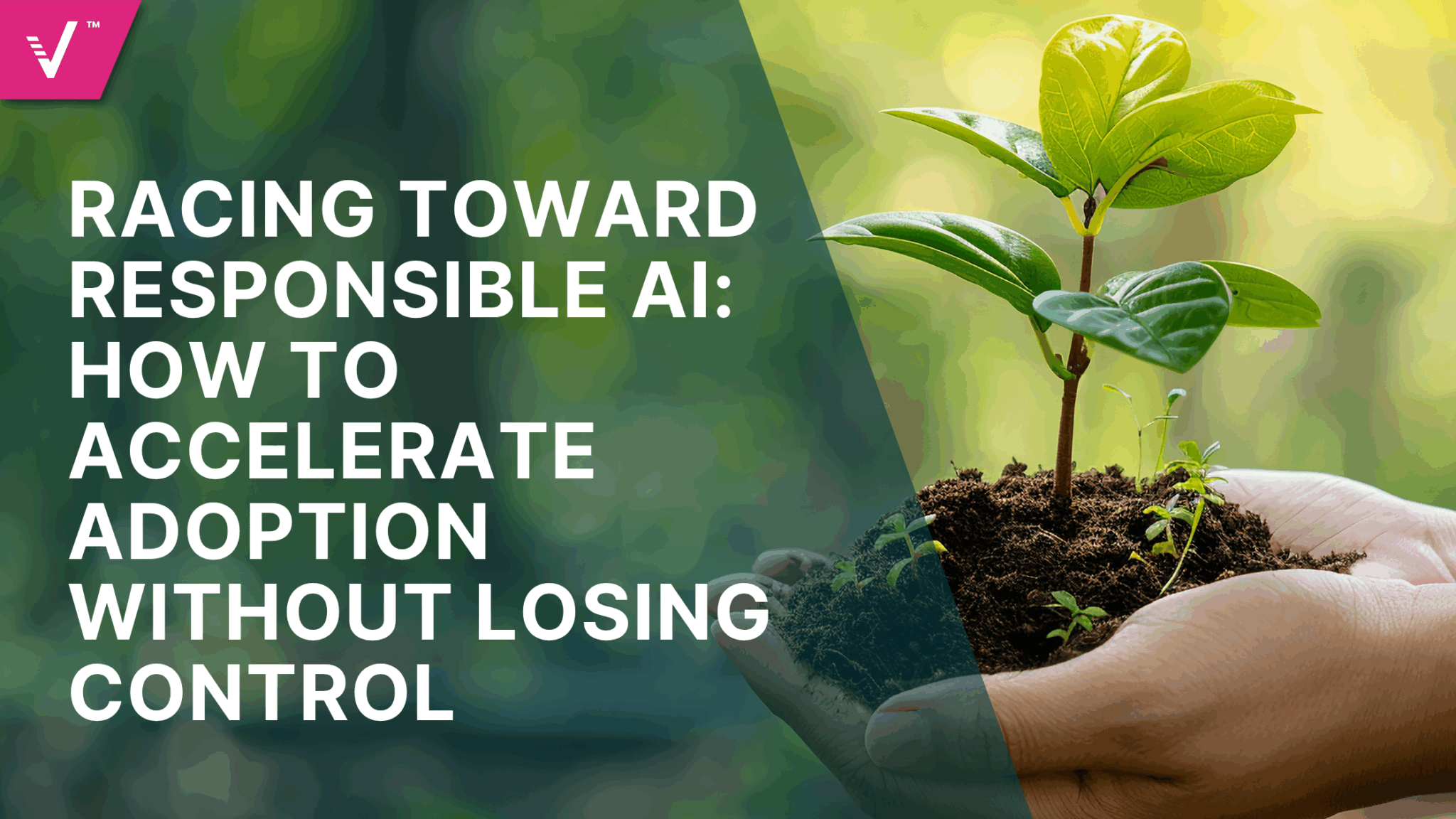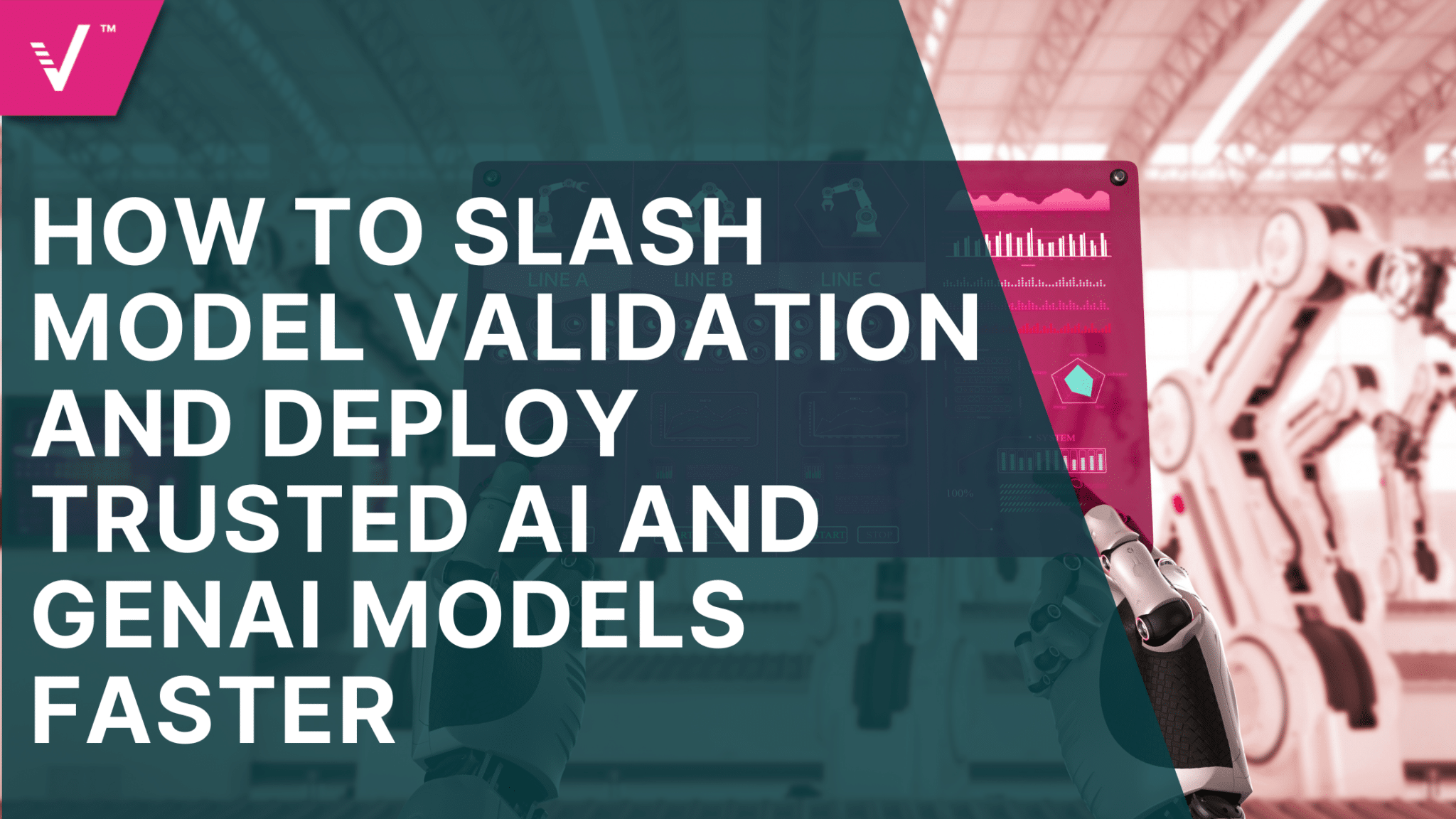Racing Toward Responsible AI: How Institutions Can Accelerate Adoption Without Losing Control

As AI adoption surges across every corner of financial services, the industry is entering a pivotal moment. Institutions are under pressure to innovate faster than ever, driven by competitive threats, customer expectations, and the unprecedented capabilities of generative AI. Yet the same forces that accelerate AI development are amplifying the complexity of managing its risk.
Financial institutions are discovering what many early adopters already know: the challenge is no longer building AI; it’s governing it. In an environment where a new AI application can be created overnight, but validating and controlling it requires weeks or months, legacy governance frameworks simply cannot keep up.
In this article, we break down the emerging trends reshaping responsible AI today, and what organizations must do to accelerate safely.
The Industry Has Moved From AI Experimentation to AI Acceleration
For the first time, financial institutions are deploying GenAI at scale. At major banks, the number of AI initiatives is growing from dozens to hundreds within months. These organizations are discovering that their traditional model risk management frameworks, which were designed for slower, more stable forms of modeling, no longer match the cadence of modern AI development.
One of the biggest shifts is that AI development is now faster than AI governance. Many institutions can wrap an API call to an LLM and create a new AI application instantly. Meanwhile, risk teams may lack the automation needed to evaluate that application with the same speed.
This creates a widening gap that organizations must close quickly.
1. Accelerating AI Requires a New Governance Foundation
Before AI systems can be safely deployed, organizations need three foundational elements:
A Clear, Consistent AI Risk-Tiering Framework
To operate at scale, institutions must classify AI systems into high-, medium-, and low-risk tiers based on factors like:
- Exposure to confidential or regulated data
- Potential financial or reputational harm
- Whether decisions affect customers directly
- Whether outputs are automated or human-reviewed
Without this, teams will disagree on what constitutes “high risk,” creating confusion, bottlenecks, or unsafe approvals.
An AI Inventory That Is Accurate, Complete, and Always Up to Date
Organizations cannot govern what they cannot see. Many banks today have AI systems being built in pockets across fraud, customer service, HR, marketing, and data science. These are often built without centralized visibility. This presents significant risk because teams can quickly lose control of what is happening when AI systems proliferate without centralized oversight.
Alignment Across Stakeholders, Including Data Governance, Cyber, and Legal
AI risk is not a single team’s responsibility. Model risk, data risk, cyber risk, compliance risk, and legal risk all converge in GenAI. Institutions need a coordinated governance structure where all key stakeholders have a seat at the table, where they’re able to evaluate AI systems holistically.
This is one of the biggest organizational challenges today and one of the most important.
2. AI Governance Must Become Automated, Not Manual
AI teams at financial institutions may have only a few dozen risk experts overseeing thousands of AI systems. Manual documentation, manual testing, and manual reviews are no longer sustainable.
Meanwhile, automation can quickly enable responsible AI at scale.
Automated Testing and Monitoring
AI Systems tend to degrade quickly with output quality, safety profiles, and hallucination rate able to drift rapidly. When a provider upgrades from GPT-4 to GPT-5, for example, institutions cannot afford a six-month revalidation cycle.
Automated testing, automated documentation, and automated monitoring are essential.
LLM-as-Judge: Safe, Constrained, and Controlled
ValidMind’s approach constrains LLM evaluators so they assess specific, well-defined behaviors rather than attempting vague holistic judgments. For example, evaluating faithfulness of a single statement rather than asking it to “tell me if this document is good.”
This targeted, controllable approach allows human experts to scale their oversight safely.
AI-Driven Governance Must Be Paired With Human Expertise
Automation does not remove human responsibility. Instead, it augments it. Experienced risk teams must oversee, train, and continuously refine AI-based governance tools to reflect the organization’s risk tolerance in every step.
3. As AI Matures, “Unknown Unknowns” Become the New Frontier of Risk
Financial institutions have long worried about “known unknowns”: unclear regulations, incomplete data, or untested AI behaviors. But as experiments move into production, a new class of risks emerges:
A. Agentic AI Raises the Stakes Dramatically
Very few organizations have AI agents in production today, but that will change rapidly. Agents introduce:
- Multi-model interactions
- Tool access
- Autonomous decision-making
- Larger attack surfaces
This complexity requires entirely new testing and monitoring methods.
B. Contagion Risk Across AI Systems
When multiple models exchange data (or when low-risk and high-risk systems interact) the risk level can escalate dramatically. Contagion risk is becoming one of the most underappreciated governance challenges.
C. Regulatory Divergence Across Regions
Europe, Canada, APAC, and U.S. states are all taking different approaches to AI regulation. Institutions operating across borders must plan for a patchwork, not a unified global standard.
This means governance frameworks must be flexible enough to adapt quickly as new rules emerge.
4. The Path Forward: Accelerate With Confidence, Not Caution
The next 12–24 months will define which institutions become leaders in AI and which fall behind. But acceleration does not mean abandoning controls. Instead, organizations must embrace a new principle:
Move fast, with governance built in from the beginning.
This means:
- Classifying and inventorying AI systems systematically
- Aligning risk and compliance stakeholders early
- Automating testing, monitoring, and documentation
- Building human-in-the-loop oversight that scales
- Embedding governance directly into AI development workflows
- Preparing now for agentic AI and next-generation risks
Institutions don’t need to choose between speed and safety. With the right governance architecture and the intelligent automation to support it, they can have both.
AI acceleration is inevitable. But without modernized, automated governance, acceleration becomes dangerous. Financial institutions need frameworks that allow them to innovate quickly while staying firmly in control. This ensures that every AI system aligns with organizational risk tolerance, regulatory expectations, and customer trust.
At ValidMind, we believe the future of AI in financial services will be shaped by institutions that adopt a risk-based, automated, and human-centered approach to AI governance. This approach will transform compliance from a bottleneck into a catalyst for safe, rapid innovation.


